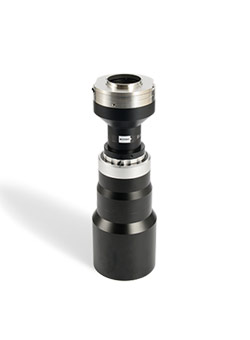Selection method of telecentric lens
(2021年10月06日)https://www.canrilloptics.com/selection-method-of-telecentric-lens.html
The industrial lens is an important part of the machine vision acquisition system. As a relatively young member of the lens family, the telecentric lens is becoming more popular with its unique performance.
To know how to make a telecentric lens, you must first understand the telecentric lens's basic knowledge, from its operation principles, applications, to its type selection, and other aspects.
However, since the telecentric lens has not been introduced for a long time, many of its characteristics have not been widely known. This article will comprehensively review the telecentric lens and reveal the mysterious journey of light in the telecentric system.
Part one: Explanation of the working principle of the telecentric lens
First, we would start from several problems about the non-telecentric lens.
The first problem is that in the imaging process when the working distance of the lens changes, the size of the image would change accordingly. As a result, the lens with the same focal length would have different magnification for different working distances. This phenomenon is similar to the visual aberration of the human visual system; if you look at things near you, they are more significant than things far away. This problem can be ignored or even utilized in some applications. However, This problem can also be a significant obstacle when our vision system performs precision measurement.
The second problem is that ordinary lenses usually have a specific range of depth of field. When the measured object is not covered by the depth of the lens's field, the image would become blurred and cannot be focused clearly. Therefore, designers have designed a focusing ring on the ordinary lens. When the working distance changes, the interesting region can be seen clearly by adjusting the focal plane. If the depth of the measured object itself exceeds a specific range, both ends of the objects cannot be seen by the lens simultaneously. Thus, to solve this problem, we have to find other methods.
The third problem is that with the continuous improvement of imaging chips' resolution, users have more stringent requirements on measurement accuracy. As ordinary lenses are subject to the principle of optical imaging, the lens can only achieve the best measurement accuracy of about 10um. In the field of visual inspection, imaging products with higher accuracy are needed.
A double telecentric lens is designed to solve these problems. By placing an aperture in the middle of the optical system, the leading light could pass through the center of the aperture. Then the leading light of the object side and the imaging side could enter the lens parallel to the optical axis. The parallel incident light ensures a large enough range of depth of field. Also, the parallel light from the lens ensures that even if the working distance changes significantly within the range of field depth, the imaging height, i.e., the magnification, would not change.
Part two: Applications of the telecentric lens
When should a machine vision telecentric lens be used? We suggest that the double telecentric lens can be chosen in the following situation.
When the object is too thick, and more than one plane needs to be measured, such as food boxes, beverage bottles, etc.
When the object's defects need to be measured, while they can only be measured under parallel illumination in the same direction.
When necessary to ensure the measurement accuracy; for example, when the allowable error is 1 um.
When the object has an aperture or is three-dimensional.
When the low distortion rate and the brightness of the image effect are required to be almost the same.
When the measured object's position is uncertain but maybe at a certain angle with the lens.
When the object jumps up and down in the measurement process, such as the production line's vibration leading to the change of the working distance.
Part three: Type selection of the telecentric lens
The type selection method of the telecentric lens is similar to that of the ordinary optical system. The following points should be paid attention to:
Compatible CCD target surface size
As the selection of ordinary lens, the CCD target surface compatible with the telecentric lens must be greater than or equal to the matching camera target surface; otherwise, the resolution would be wasted.
Interface type
At present, the interface type of telecentric lens is similar to that of the ordinary lens, including C port and F port, which can be used as long as it is matched with the camera.
Magnification, or imaging range
When the magnification and CCD target surface is determined, the imaging range is determined, and vice versa.
Working distance
Generally, when the above three points are specified, the working distance has also been determined within a specific range, which is determined by the optical imaging path. It should be noted that whether the working distance meets the actual requirements. When using the telecentric optical system for measurement, we suggest that the lens be selected first, and other mechanical structures should be designed according to its working distance.
Canrill Optics is a professional optical lens manufacturer, we provide machine vision measurement, telecentric lens design, canrill lens and etc. Want to know more? Please contact us.
- このできごとのURL:







コメント